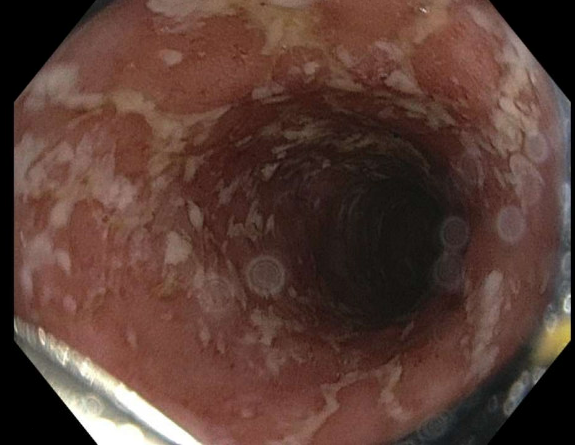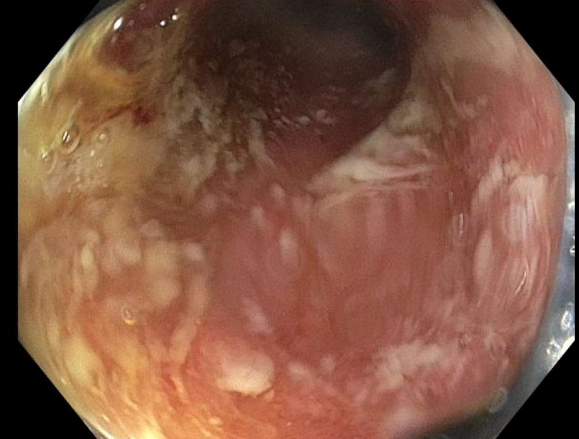Monday Poster Session
Category: Colon
P2546 - Beyond the Flare: Diagnosing EBV Colitis in a Patient With Refractory UC

Shawn Howell, DO
University of Arkansas for Medical Sciences
Fayetteville, AR
Presenting Author(s)
1University of Arkansas for Medical Sciences, Fayetteville, AR; 2Mercy Hospital, Rogers, AR
Introduction:
Epstein-Barr virus (EBV), a herpesvirus infecting over 90% of the global population, typically establishes lifelong latency in B lymphocytes after primary infection. While reactivation is often silent, it can be pathogenic in immunocompromised hosts and has been implicated in various disorders, including colitis. Recent research suggests EBV may contribute to refractory inflammatory bowel disease (IBD) through immune dysregulation, particularly in patients with ulcerative colitis (UC) on immunosuppressive therapies like corticosteroids, biologics, and JAK inhibitors.
Although EBV exposure is common in IBD patients, biopsy-proven EBV colitis is rare and often indistinguishable from an IBD flare without tissue-based confirmation such as EBV-encoded RNA (EBER) in situ hybridization (ISH). Here, we present a case of biopsy-confirmed EBV colitis in a patient with longstanding, treatment-resistant UC, highlighting diagnostic and therapeutic challenges.
Case Description/
Methods:
A 41-year-old male presented to the endoscopy suite for a routine outpatient colonoscopy for surveillance of his Ulcerative colitis (UC). He was initially diagnosed in 2013 and treated with oral mesalamine. Due to persistent symptoms, therapy was escalated to vedolizumab, then switched to Infliximab, and later switched to Tofacitinib due to lack of drug efficacy. At the time of the colonoscopy, he continued to experience life altering symptoms, to the point he was unable to take his daughter to school in the mornings.
The colonoscopy, showed significant continuous inflammation up to 40cm into the sigmoid colon. Multiple random colon biopsies were taken and he was diagnosed with severe left-sided ulcerative colitis. Pathology showed moderate-severe active chronic proctocolitis with EBER ISH stain positive for EBV. Given the patient’s refractory UC despite trials of multiple immunomodulating medications it was thought the EBV colitis was the culprit.
Discussion:
EBV reactivation, particularly under immunosuppression, can mimic UC flares both clinically and endoscopically. The gold standard for diagnosis remains EBER ISH, and studies show EBV colitis may be underdiagnosed, with up to 36% of refractory IBD patients testing positive. Though no standardized treatment exists, some patients improve with reduced immunosuppression or antivirals. Our case underscores the importance of maintaining a high index of suspicion and incorporating EBER testing in patients with persistent UC despite appropriate therapy.
Figure: Endoscopic image of the rectum with diffuse circumferential ulcerations and edema
Figure: Endoscopic image of the sigmoid colon with diffuse circumferential ulcerations and edema
Disclosures:
Shawn Howell indicated no relevant financial relationships.
Terryl Ortego indicated no relevant financial relationships.
Shawn Howell, DO1, Terryl Ortego, MD2. P2546 - Beyond the Flare: Diagnosing EBV Colitis in a Patient With Refractory UC, ACG 2025 Annual Scientific Meeting Abstracts. Phoenix, AZ: American College of Gastroenterology.
